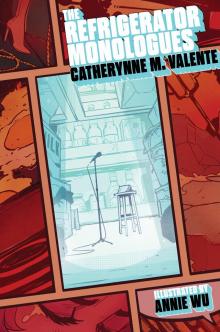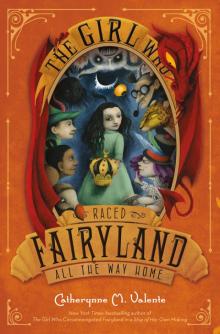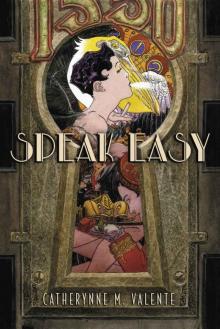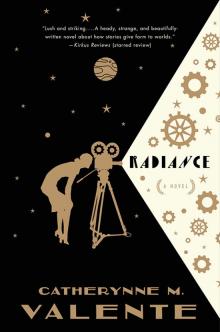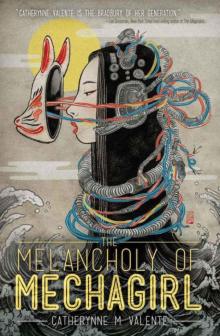


How Democracies Die, Page 2
Steven Levitsky
—“The Horse, the Stag, and the Hunter,” Aesop’s Fables
On October 30, 1922, Benito Mussolini arrived in Rome at 10:55 A.M. in an overnight sleeping car from Milan. He had been invited to the capital city by the king to accept Italy’s premiership and form a new cabinet. Accompanied by a small group of guards, Mussolini first stopped at the Hotel Savoia and then, wearing a black suit jacket, black shirt, and matching black bowler hat, walked triumphantly to the king’s Quirinal Palace. Rome was filled with rumors of unrest. Bands of Fascists—many in mismatched uniforms—roamed the city’s streets. Mussolini, aware of the power of the spectacle, strode into the king’s marble-floored residential palace and greeted him, “Sire, forgive my attire. I come from the battlefield.”
This was the beginning of Mussolini’s legendary “March on Rome.” The image of masses of Blackshirts crossing the Rubicon to seize power from Italy’s Liberal state became fascist canon, repeated on national holidays and in children’s schoolbooks throughout the 1920s and 1930s. Mussolini did his part to enshrine the myth. At the last train stop before entering Rome that day, he had considered disembarking to ride into the city on horseback surrounded by his guards. Though the plan was ultimately abandoned, afterward he did all he could to bolster the legend of his rise to power as, in his own words, a “revolution” and “insurrectional act” that launched a new fascist epoch.
The truth was more mundane. The bulk of Mussolini’s Blackshirts, often poorly fed and unarmed, arrived only after he had been invited to become prime minister. The squads of Fascists around the country were a menace, but Mussolini’s machinations to take the reins of state were no revolution. He used his party’s 35 parliamentary votes (out of 535), divisions among establishment politicians, fear of socialism, and the threat of violence by 30,000 Blackshirts to capture the attention of the timid King Victor Emmanuel III, who saw in Mussolini a rising political star and a means of neutralizing unrest.
With political order restored by Mussolini’s appointment and socialism in retreat, the Italian stock market soared. Elder statesmen of the Liberal establishment, such as Giovanni Giolitti and Antonio Salandra, found themselves applauding the turn of events. They regarded Mussolini as a useful ally. But not unlike the horse in Aesop’s fable, Italy soon found itself under “bit and spur.”
Some version of this story has repeated itself throughout the world over the last century. A cast of political outsiders, including Adolf Hitler, Getúlio Vargas in Brazil, Alberto Fujimori in Peru, and Hugo Chávez in Venezuela, came to power on the same path: from the inside, via elections or alliances with powerful political figures. In each instance, elites believed the invitation to power would contain the outsider, leading to a restoration of control by mainstream politicians. But their plans backfired. A lethal mix of ambition, fear, and miscalculation conspired to lead them to the same fateful mistake: willingly handing over the keys of power to an autocrat-in-the-making.
—
Why do seasoned elder statesmen make this mistake? There are few more gripping illustrations than the rise of Adolf Hitler in January 1933. His capacity for violent insurrection was on display as early as Munich’s Beer Hall Putsch of 1923—a surprise evening strike in which his group of pistol-bearing loyalists took control of several government buildings and a Munich beer hall where Bavarian officials were meeting. The ill-conceived attack was halted by the authorities, and Hitler spent nine months in jail, where he wrote his infamous personal testament, Mein Kampf. Thereafter, Hitler publicly committed to gaining power via elections. Initially, his National Socialist movement found few votes. The Weimar political system had been founded in 1919 by a prodemocratic coalition of Catholics, Liberals, and Social Democrats. But beginning in 1930, with the German economy reeling, the center-right fell prey to infighting, and the Communists and Nazis grew in popularity.
The elected government collapsed in March 1930 amid the pain of the Great Depression. With political gridlock blocking government action, the figurehead president, World War I hero Paul von Hindenburg, took advantage of a constitutional article giving the head of state the authority to name chancellors in the exceptional circumstance that parliament failed to deliver governing majorities. The aim of these unelected chancellors—and the president—was not only to govern but to sideline radicals on the left and right. First, Center Party economist Heinrich Brüning (who would later flee Germany to become a professor at Harvard) attempted, but failed, to restore economic growth; his time as chancellor was short-lived. President von Hindenburg turned next to nobleman Franz von Papen, and then, in growing despondency, to von Papen’s close friend and rival, former defense minister General Kurt von Schleicher. But without parliamentary majorities in the Reichstag, stalemate persisted. Leaders, for good reason, feared the next election.
Convinced that “something must finally give,” a cabal of rivalrous conservatives convened in late January 1933 and settled on a solution: A popular outsider should be placed at the head of the government. They despised him but knew that at least he had a mass following. And, most of all, they thought they could control him.
On January 30, 1933, von Papen, one of the chief architects of the plan, dismissed worries over the gamble that would make Adolf Hitler chancellor of a crisis-ridden Germany with the reassuring words: “We’ve engaged him for ourselves….Within two months, we will have pushed [him] so far into a corner that he’ll squeal.” A more profound miscalculation is hard to imagine.
The Italian and German experiences highlight the type of “fateful alliance” that often elevates authoritarians to power. In any democracy, politicians will at times face severe challenges. Economic crisis, rising public discontent, and the electoral decline of mainstream political parties can test the judgment of even the most experienced insiders. If a charismatic outsider emerges on the scene, gaining popularity as he challenges the old order, it is tempting for establishment politicians who feel their control is unraveling to try to co-opt him. If an insider breaks ranks to embrace the insurgent before his rivals do, he can use the outsider’s energy and base to outmaneuver his peers. And then, establishment politicians hope, the insurgent can be redirected to support their own program.
This sort of devil’s bargain often mutates to the benefit of the insurgent, as alliances provide outsiders with enough respectability to become legitimate contenders for power. In early 1920s Italy, the old Liberal order was crumbling amid growing strikes and social unrest. The failure of traditional parties to forge solid parliamentary majorities left the elderly fifth-term prime minister Giovanni Giolitti desperate, and against the wishes of advisors he called early elections in May 1921. With the aim of tapping into the Fascists’ mass appeal, Giolitti decided to offer Mussolini’s upstart movement a place on his electoral group’s “bourgeois bloc” of Nationalists, Fascists, and Liberals. This strategy failed—the bourgeois bloc won less than 20 percent of the vote, leading to Giolitti’s resignation. But Mussolini’s place on the ticket gave his ragtag group the legitimacy it would need to enable its rise.
Such fateful alliances are hardly confined to interwar Europe. They also help to explain the rise of Hugo Chávez. Venezuela had prided itself on being South America’s oldest democracy, in place since 1958. Chávez, a junior military officer and failed coup leader who had never held public office, was a political outsider. But his rise to power was given a critical boost from a consummate insider: ex-president Rafael Caldera, one of the founders of Venezuelan democracy.
Venezuelan politics was long dominated by two parties, the center-left Democratic Action and Caldera’s center-right Social Christian Party (known as COPEI). The two alternated in power peacefully for more than thirty years, and by the 1970s, Venezuela was viewed as a model democracy in a region plagued by coups and dictatorships. During the 1980s, however, the country’s oil-dependent economy sank into a prolonged slump, a crisis that persisted for more than a decade, nearly doubling the poverty rate. Not surprisingly, Venezuelans grew disaf
fected. Massive riots in February 1989 suggested that the established parties were in trouble. Three years later, in February 1992, a group of junior military officers rose up against President Carlos Andrés Pérez. Led by Hugo Chávez, the rebels called themselves “Bolivarians,” after revered independence hero Simón Bolívar. The coup failed. But when the now-detained Chávez appeared on live television to tell his supporters to lay down their arms (declaring, in words that would become legendary, that their mission had failed “for now”), he became a hero in the eyes of many Venezuelans, particularly poorer ones. Following a second failed coup in November 1992, the imprisoned Chávez changed course, opting to pursue power via elections. He would need help.
Although ex-president Caldera was a well-regarded elder statesman, his political career was waning in 1992. Four years earlier, he had failed to secure his party’s presidential nomination, and he was now considered a political relic. But the seventy-six-year-old senator still dreamed of returning to the presidency, and Chávez’s emergence provided him with a lifeline. On the night of Chávez’s initial coup, the former president stood up during an emergency joint session of congress and embraced the rebels’ cause, declaring:
It is difficult to ask the people to sacrifice themselves for freedom and democracy when they think that freedom and democracy are incapable of giving them food to eat, of preventing the astronomical rise in the cost of subsistence, or of placing a definitive end to the terrible scourge of corruption that, in the eyes of the entire world, is eating away at the institutions of Venezuela with each passing day.
The stunning speech resurrected Caldera’s political career. Having tapped into Chávez’s antisystem constituency, the ex-president’s public support swelled, which allowed him to make a successful presidential bid in 1993.
Caldera’s public flirtation with Chávez did more than boost his own standing in the polls; it also gave Chávez new credibility. Chávez and his comrades had sought to destroy their country’s thirty-four-year-old democracy. But rather than denouncing the coup leaders as an extremist threat, the former president offered them public sympathy—and, with it, an opening to mainstream politics.
Caldera also helped open the gates to the presidential palace for Chávez by dealing a mortal blow to Venezuela’s established parties. In a stunning about-face, he abandoned COPEI, the party he had founded nearly half a century earlier, and launched an independent presidential bid. To be sure, the parties were already in crisis. But Caldera’s departure and subsequent antiestablishment campaign helped bury them. The party system collapsed after Caldera’s 1993 election as an antiparty independent, paving the way for future outsiders. Five years later, it would be Chávez’s turn.
But back in 1993, Chávez still had a major problem. He was in jail, awaiting trial for treason. However, in 1994, now-President Caldera dropped all charges against him. Caldera’s final act in enabling Chávez was literally opening the gates—of prison—for him. Immediately after Chávez’s release, a reporter asked him where he was going. “To power,” he replied. Freeing Chávez was popular, and Caldera had promised such a move during the campaign. Like most Venezuelan elites, he viewed Chávez as a passing fad—someone who would likely fall out of public favor by the time of the next election. But in dropping all charges, rather than allowing Chávez to stand trial and then pardoning him, Caldera elevated him, transforming the former coup leader overnight into a viable presidential candidate. On December 6, 1998, Chávez won the presidency, easily defeating an establishment-backed candidate. On inauguration day, Caldera, the outgoing president, could not bring himself to deliver the oath of office to Chávez, as tradition dictated. Instead, he stood glumly off to one side.
Despite their vast differences, Hitler, Mussolini, and Chávez followed routes to power that share striking similarities. Not only were they all outsiders with a flair for capturing public attention, but each of them rose to power because establishment politicians overlooked the warning signs and either handed over power to them (Hitler and Mussolini) or opened the door for them (Chávez).
The abdication of political responsibility by existing leaders often marks a nation’s first step toward authoritarianism. Years after Chávez’s presidential victory, Rafael Caldera explained his mistakes simply: “Nobody thought that Mr. Chávez had even the remotest chance of becoming president.” And merely a day after Hitler became chancellor, a prominent conservative who aided him admitted, “I have just committed the greatest stupidity of my life; I have allied myself with the greatest demagogue in world history.”
—
Not all democracies have fallen into this trap. Some—including Belgium, Britain, Costa Rica, and Finland—have faced challenges from demagogues but also have managed to keep them out of power. How have they done it? It is tempting to think this survival is rooted in the collective wisdom of voters. Maybe Belgians and Costa Ricans were simply more democratic than their counterparts in Germany or Italy. After all, we like to believe that the fate of a government lies in the hands of its citizens. If the people hold democratic values, democracy will be safe. If citizens are open to authoritarian appeals, then, sooner or later, democracy will be in trouble.
This view is wrong. It assumes too much of democracy—that “the people” can shape at will the kind of government they possess. It’s hard to find any evidence of majority support for authoritarianism in 1920s Germany and Italy. Before the Nazis and Fascists seized power, less than 2 percent of the population were party members, and neither party achieved anything close to a majority of the vote in free and fair elections. Rather, solid electoral majorities opposed Hitler and Mussolini—before both men achieved power with the support of political insiders blind to the danger of their own ambitions.
Hugo Chávez was elected by a majority of voters, but there is little evidence that Venezuelans were looking for a strongman. At the time, public support for democracy was higher there than in Chile—a country that was, and remains, stably democratic. According to the 1998 Latinobarómetro survey, 60 percent of Venezuelans agreed with the statement “Democracy is always the best form of government,” while only 25 percent agreed that “under some circumstances, an authoritarian government can be preferable to a democratic one.” By contrast, only 53 percent of respondents in Chile agreed that “democracy is always the best form of government.”
Potential demagogues exist in all democracies, and occasionally, one or more of them strike a public chord. But in some democracies, political leaders heed the warning signs and take steps to ensure that authoritarians remain on the fringes, far from the centers of power. When faced with the rise of extremists or demagogues, they make a concerted effort to isolate and defeat them. Although mass responses to extremist appeals matter, what matters more is whether political elites, and especially parties, serve as filters. Put simply, political parties are democracy’s gatekeepers.
—
If authoritarians are to be kept out, they first have to be identified. There is, alas, no foolproof advance warning system. Many authoritarians can be easily recognized before they come to power. They have a clear track record: Hitler led a failed putsch; Chávez led a failed military uprising; Mussolini’s Blackshirts engaged in paramilitary violence; and in Argentina in the mid–twentieth century, Juan Perón helped lead a successful coup two and a half years before running for president.
But politicians do not always reveal the full scale of their authoritarianism before reaching power. Some adhere to democratic norms early in their careers, only to abandon them later. Consider Hungarian Prime Minister Viktor Orbán. Orbán and his Fidesz party began as liberal democrats in the late 1980s, and in his first stint as prime minister between 1998 and 2002, Orbán governed democratically. His autocratic about-face after returning to power in 2010 was a genuine surprise.
So how do we identify authoritarianism in politicians who don’t have an obvious antidemocratic record? Here we turn to the eminent political scientist Juan Linz. Born in Weimar German
y and raised amid Spain’s civil war, Linz knew all too well the perils of losing a democracy. As a professor at Yale, he devoted much of his career to trying to understand how and why democracies die. Many of Linz’s conclusions can be found in a small but seminal book called The Breakdown of Democratic Regimes. Published in 1978, the book highlights the role of politicians, showing how their behavior can either reinforce democracy or put it at risk. He also proposed, but never fully developed, a “litmus test” for identifying antidemocratic politicians.
Building on Linz’s work, we have developed a set of four behavioral warning signs that can help us know an authoritarian when we see one. We should worry when a politician 1) rejects, in words or action, the democratic rules of the game, 2) denies the legitimacy of opponents, 3) tolerates or encourages violence, or 4) indicates a willingness to curtail the civil liberties of opponents, including the media. Table 1 shows how to assess politicians in terms of these four factors.
A politician who meets even one of these criteria is cause for concern. What kinds of candidates tend to test positive on a litmus test for authoritarianism? Very often, populist outsiders do. Populists are antiestablishment politicians—figures who, claiming to represent the voice of “the people,” wage war on what they depict as a corrupt and conspiratorial elite. Populists tend to deny the legitimacy of established parties, attacking them as undemocratic and even unpatriotic. They tell voters that the existing system is not really a democracy but instead has been hijacked, corrupted, or rigged by the elite. And they promise to bury that elite and return power to “the people.” This discourse should be taken seriously. When populists win elections, they often assault democratic institutions. In Latin America, for example, of all fifteen presidents elected in Bolivia, Ecuador, Peru, and Venezuela between 1990 and 2012, five were populist outsiders: Alberto Fujimori, Hugo Chávez, Evo Morales, Lucio Gutiérrez, and Rafael Correa. All five ended up weakening democratic institutions.




